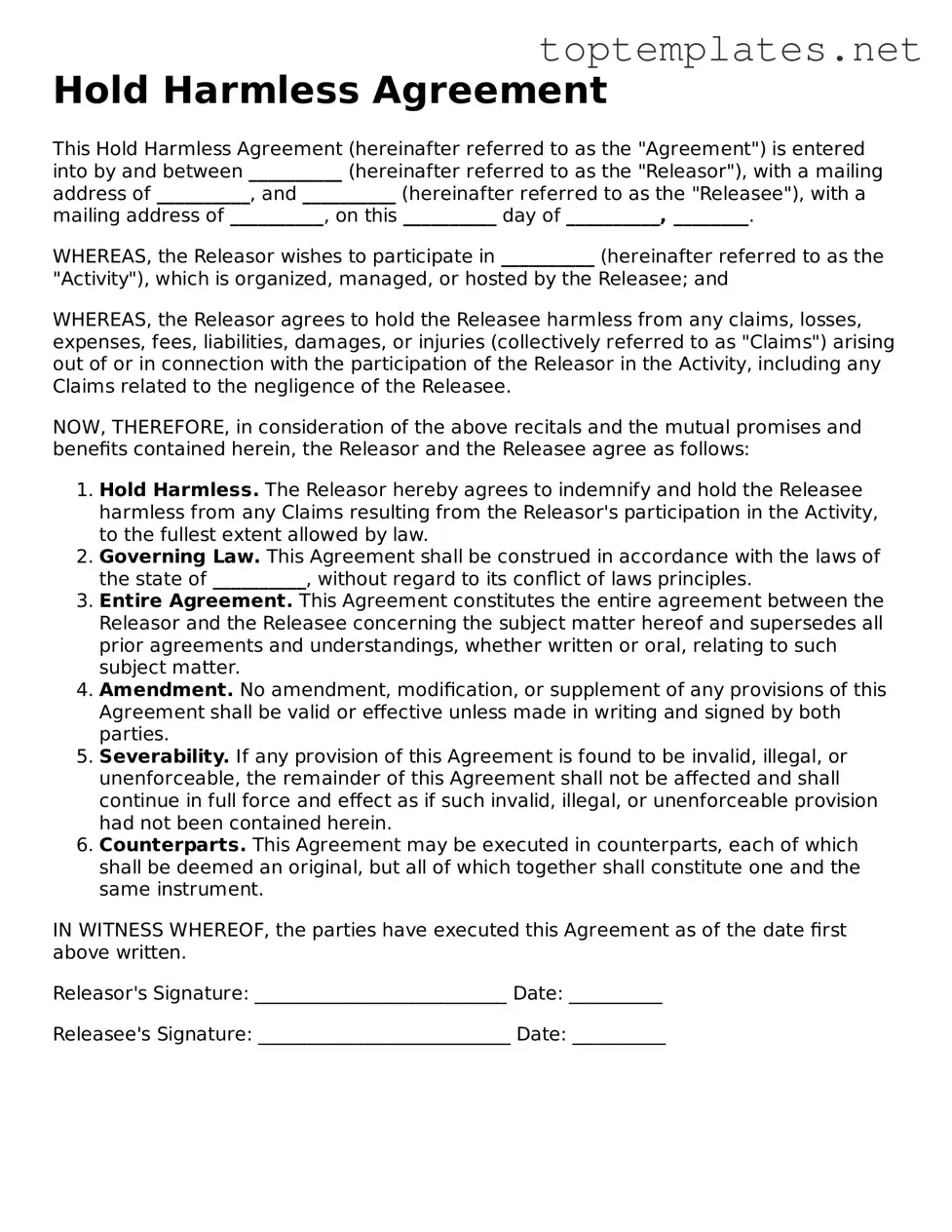Hold Harmless Agreement
This Hold Harmless Agreement (hereinafter referred to as the "Agreement") is entered into by and between __________ (hereinafter referred to as the "Releasor"), with a mailing address of __________, and __________ (hereinafter referred to as the "Releasee"), with a mailing address of __________, on this __________ day of __________, ________.
WHEREAS, the Releasor wishes to participate in __________ (hereinafter referred to as the "Activity"), which is organized, managed, or hosted by the Releasee; and
WHEREAS, the Releasor agrees to hold the Releasee harmless from any claims, losses, expenses, fees, liabilities, damages, or injuries (collectively referred to as "Claims") arising out of or in connection with the participation of the Releasor in the Activity, including any Claims related to the negligence of the Releasee.
NOW, THEREFORE, in consideration of the above recitals and the mutual promises and benefits contained herein, the Releasor and the Releasee agree as follows:
- Hold Harmless. The Releasor hereby agrees to indemnify and hold the Releasee harmless from any Claims resulting from the Releasor's participation in the Activity, to the fullest extent allowed by law.
- Governing Law. This Agreement shall be construed in accordance with the laws of the state of __________, without regard to its conflict of laws principles.
- Entire Agreement. This Agreement constitutes the entire agreement between the Releasor and the Releasee concerning the subject matter hereof and supersedes all prior agreements and understandings, whether written or oral, relating to such subject matter.
- Amendment. No amendment, modification, or supplement of any provisions of this Agreement shall be valid or effective unless made in writing and signed by both parties.
- Severability. If any provision of this Agreement is found to be invalid, illegal, or unenforceable, the remainder of this Agreement shall not be affected and shall continue in full force and effect as if such invalid, illegal, or unenforceable provision had not been contained herein.
- Counterparts. This Agreement may be executed in counterparts, each of which shall be deemed an original, but all of which together shall constitute one and the same instrument.
IN WITNESS WHEREOF, the parties have executed this Agreement as of the date first above written.
Releasor's Signature: ___________________________ Date: __________
Releasee's Signature: ___________________________ Date: __________
